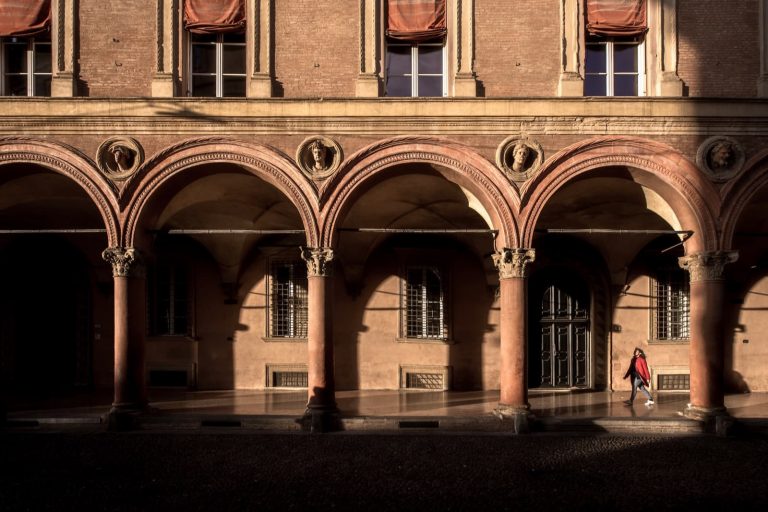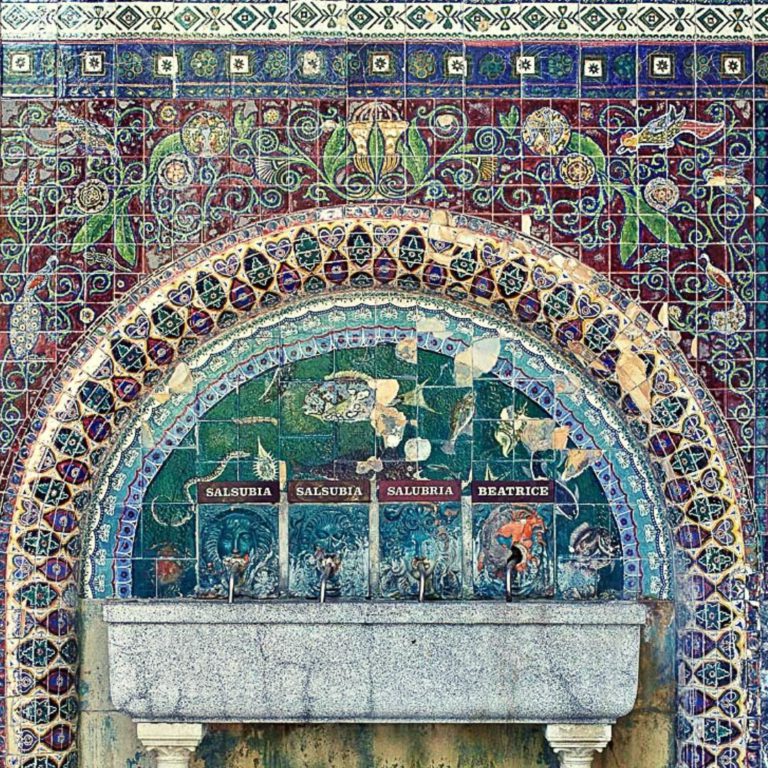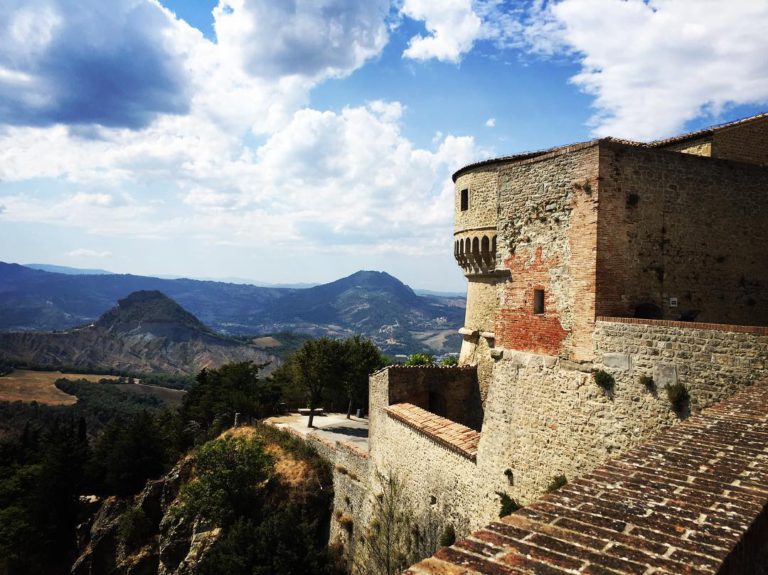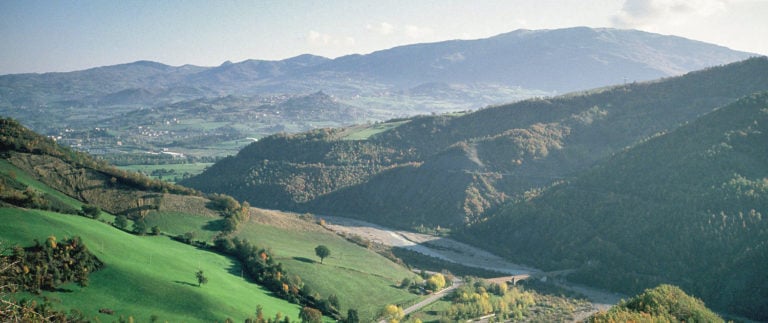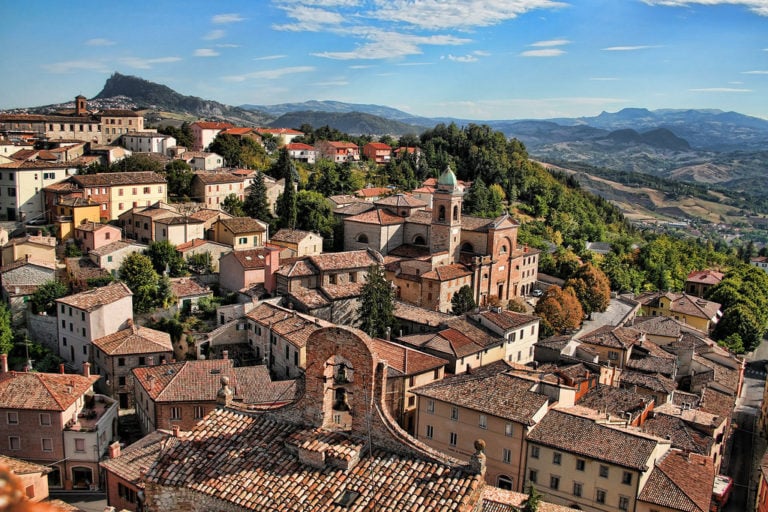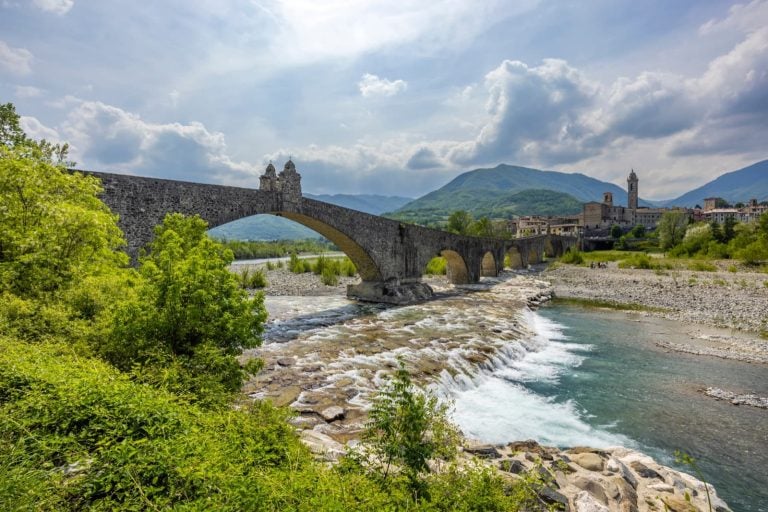Romagna is a land where history has been written by powerful ruling families such as the Sforzas, the Medicis and the Malatestas. Many castles still stand as a testimony to this.
Here are 6 castles in Romagna with thermal baths nearby (within 30 km).
CASTLES AND THERMAL SPAS IN THE PROVINCE OF RAVENNA
The Sforza Fortress in Bagnara di Romagna
Built by the Riario-Sforza lords of Imola on the ruins of the medieval fortress built by the Visconti family, the Fortress of Bagnara di Romagna is considered by many to be a masterpiece of 15th century fortification.
Equally impressive are the central courtyard, which still retains its Renaissance character and features, some rooms with original wooden ceilings and the spiral staircase carved out of 78 sandstone monoliths, each in the typical style of the 16th century.
The fortress ceased to be used for military purposes in the 18th century and now houses the Municipal Museum.
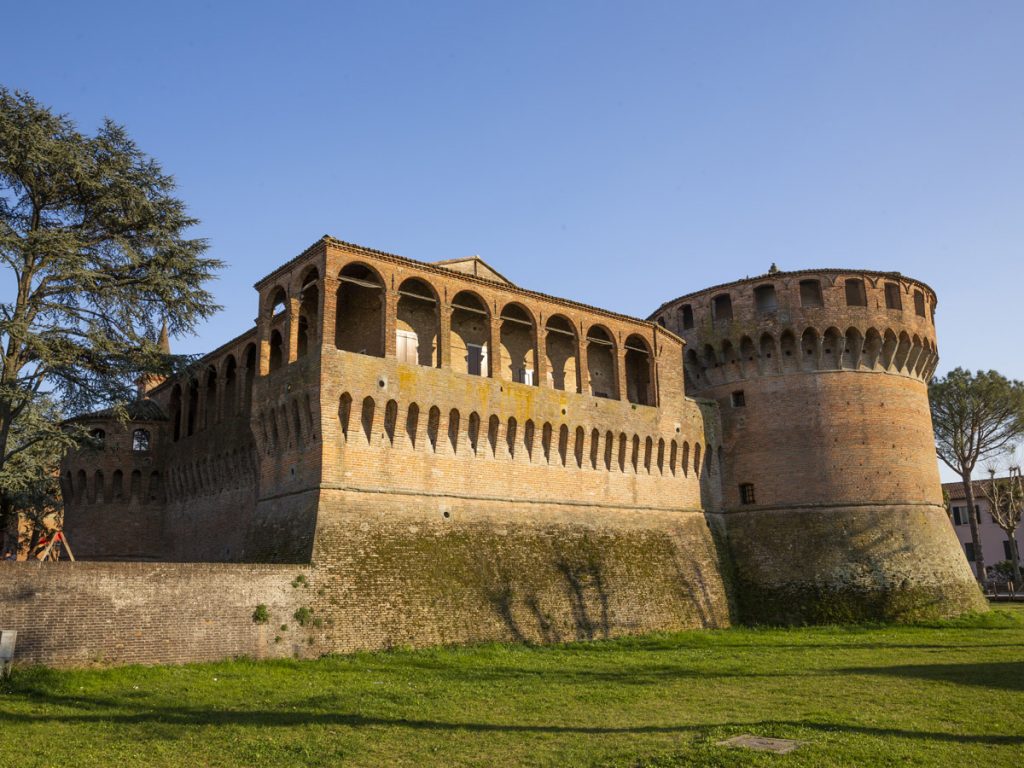
If you want to combine culture and relaxation, you can choose the village that suits you best: in the valley, to taste the sweet honey of the Terme di Castel San Pietro, or on the hills of Romagna, at the Terme di Riolo, a spa for the whole family.
CASTLES AND THERMAL SPAS IN THE PROVINCE OF FORLÌ-CESENA
The Fortress of Castrocaro Terme
Although the cliff has been inhabited since the Neolithic period, the first documentary evidence dates back to 961. Since its construction in 1118, the fortress has always been easy to defend thanks to its strategic position.
At the end of the 13th century, under the rule of the Pope and the King of Naples, Robert of Anjou, the castle was transformed from a feudal residence into a military stronghold and a seat of justice.
It reached its greatest splendour at the beginning of the 15th century when the Republic of Florence annexed the village of Castrocaro, which had been the capital of Tuscan Romagna for over 200 years.
The Fortress is made up of three different architectural and defensive structures: the Girone (the oldest part dates back to before the year 1000), the Rocca (added in the 13th or 14th century) and the Arsenali Medicei (an example of Renaissance fortification that is unique in Italy for its size and type).
Today it houses the Historical/Archaeological Museum, which exhibits weapons, maiolica, paintings, furniture and ancient artefacts, and the Enoteca of Local Fine Wines.
The ticket also includes access to the Bailey, the Courtyard, the Church of Santa Barbara, the Prison Tower, the Troglodyte Caves and the “Balcone dell’Acquacheta”, a large terrace with a breathtaking view over the valley and Mount Falterona.
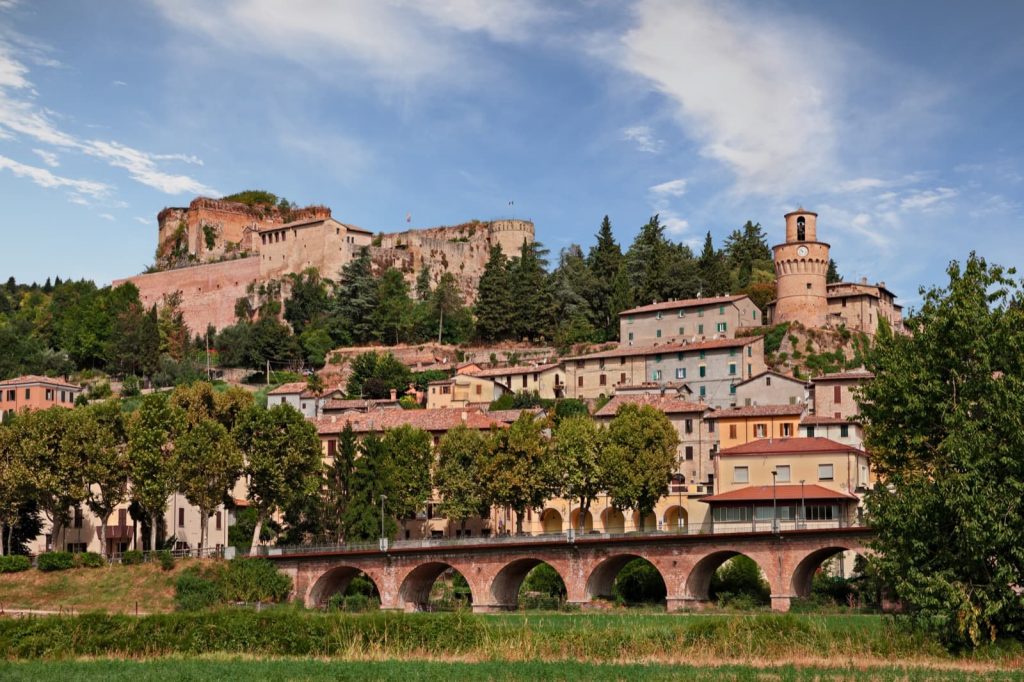
The Fortress of Bertinoro
The Fortress in the vollage of Bertinoro was built in the 10th century on the Cesubium hill.
The medieval structure was modified several times. The most important change took place at the end of the 16th century, when it became a bishop’s palace.
Over the centuries it passed through the hands of the Counts of Bertinoro, the House of Malatesta and even Catherine Sforza and Cesare Borgia.
Since 1994 it has been the seat of the University Residential Centre of Bertinoro, while its ancient underground cisterns have housed the Interreligious Museum since 2005. This is the only museum in Italy where you can admire places, rituals and objects that link the history of mankind and the three main monotheistic religions: Christianity, Judaism and Islam.
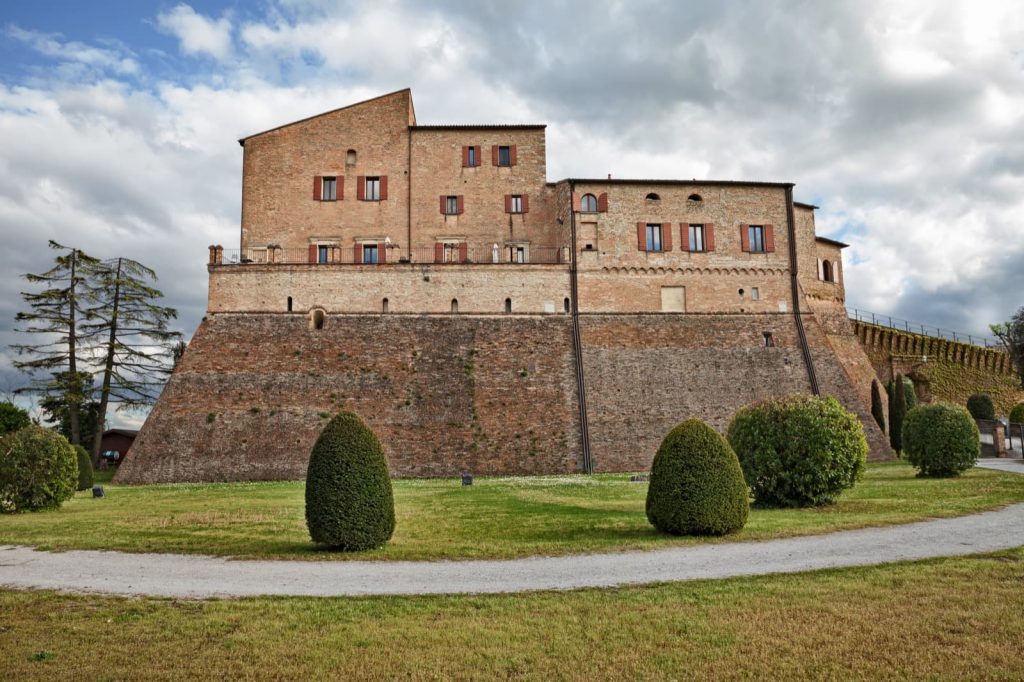
If you choose one of the two castles in the province of Forlì you can relax at Terme di Castrocaro, a complex of buildings that has been providing wellness treatments for the body since 1938.
CASTLES AND THERMAL SPAS IN THE PROVINCE OF RIMINI
The Malatesta Fortress of Montefiore Conca
This medieval castle, perched on a hill in Montefiore Conca, the middle of the Conca Valley, was transformed into a military fortress and residence by Malatesta Guastafamiglia. Over the years it has been an important crossroads and meeting point, from the King of Hungary in 1347 to Sigismund of Luxembourg, King of Bohemia, and Popes Gregory XII and Julius II, to name but a few.
As Sigismondo Pandolfo Malatesta used to hide his medals in the stones of his fortresses, legend has it that part of the famous “Sigismondo’s treasure” is also hidden here.
During the visit, visitors can walk through archaeological excavations, an exhibition of finds, majestic reception rooms with frescoes dating back to the mid-1300s, historical reconstructions and panoramic terraces.
Adults can enjoy guided tours, tastings, theatre and music performances, while students can take part in themed tours and educational workshops.
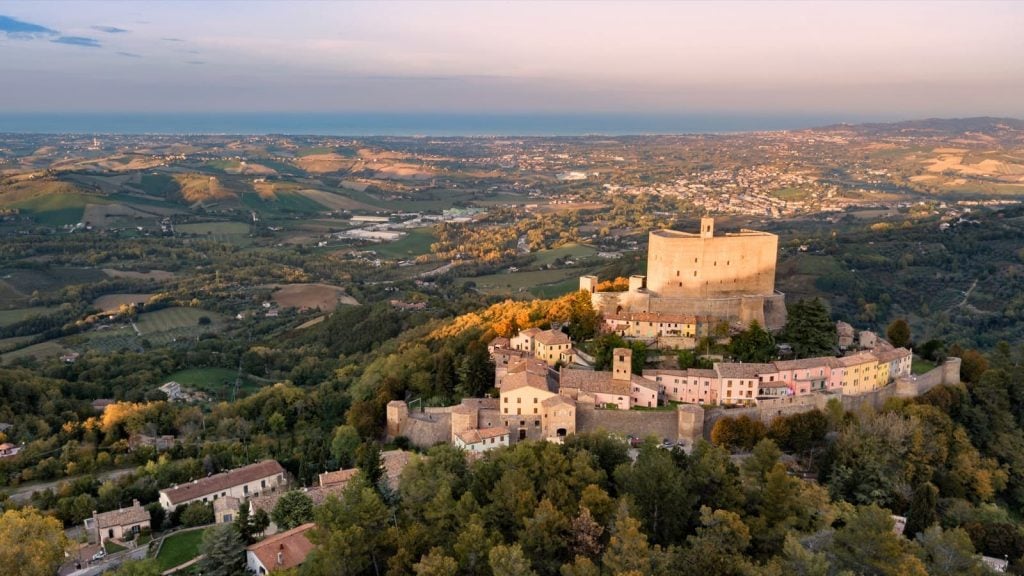
The Malatesta Fortress of Santarcangelo di Romagna
As early as the end of the 9th century, the Codice Bavaro mentions a castle called Santarcangelo on the Mons Iovis, where Federico Barbarossa lived in 1164.
From the first half of the 13th century, during the turmoil between the Guelphs and the Ghibellines, the lordship of Santarcangelo gradually passed to the Malatesta family, who, thanks to Sigismondo Pandolfo (1447), gave the fortress the layout we see today.
The castle then passed to the Da Montefeltro family, the Borgia family, the Venetian family and finally to the Holy See, which granted it in emphyteusis to various lords. Today the castle belongs to the Colonna di Paliano family. Since the fortress belonged to Gianciotto around 1288, some scholars believe that Dante’s story of Paolo and Francesca could be set here.
The Fortress has a quadrangular plan, with a large keep that dominates the village below, three polygonal towers and curtain walls with a crenellated base, typical of the Malatesta period.
Today the castle is the seat of the Sigismondo Malatesta Association, so don’t be surprised if you see a small group of courtesans telling legends of the past or a fearsome duel between two knights with shields and swords.
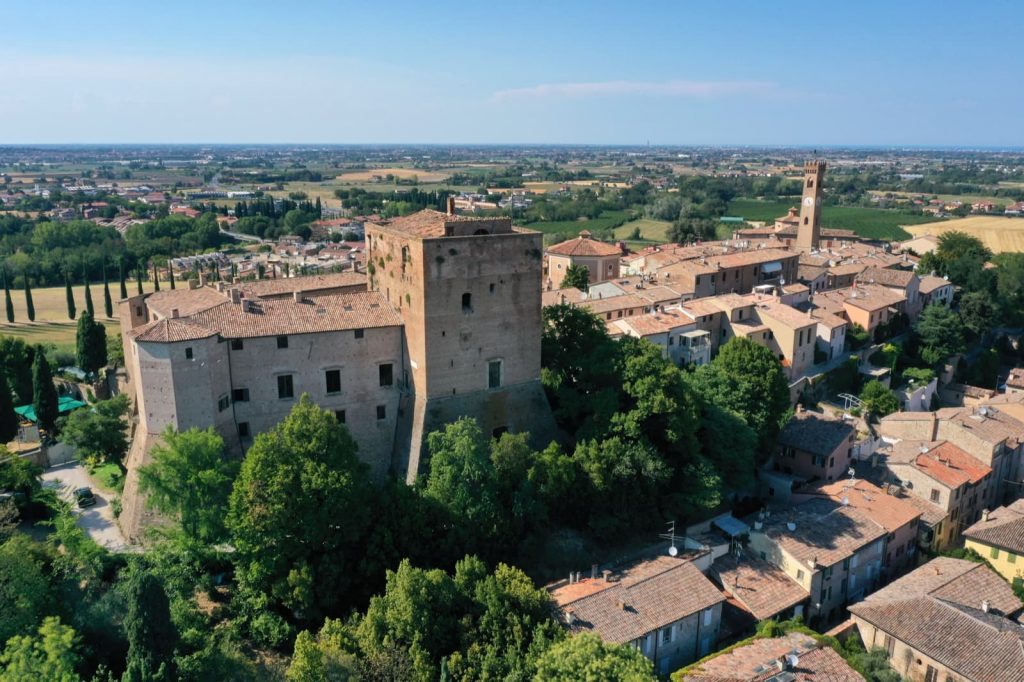
The Malatesta Fortress of Verucchio
Known as “Rocca del Sasso” for its position on a rocky spur that dominates the town, the valley and the plain as far as the Adriatic Sea, the Fortress of Verucchio has been in the hands of the Malatesta family since the 12th century, as evidenced by the findings in the cellars.
Although Malatesta da Verucchio, who appears as “Mastin Vecchio” in Dante’s Inferno, was born here, the fortress was enlarged by Sigismondo Pandolfo (1449).
The castle, with its rectangular floor plan and large central tower, can be visited in its entirety, from the courtyard to the clock tower and the great hall, where many armours and the Malatesta family tree are exhibited.
Don’t forget to visit the terrace for a spectacular panoramic view of the ancient Malatesta kingdom.
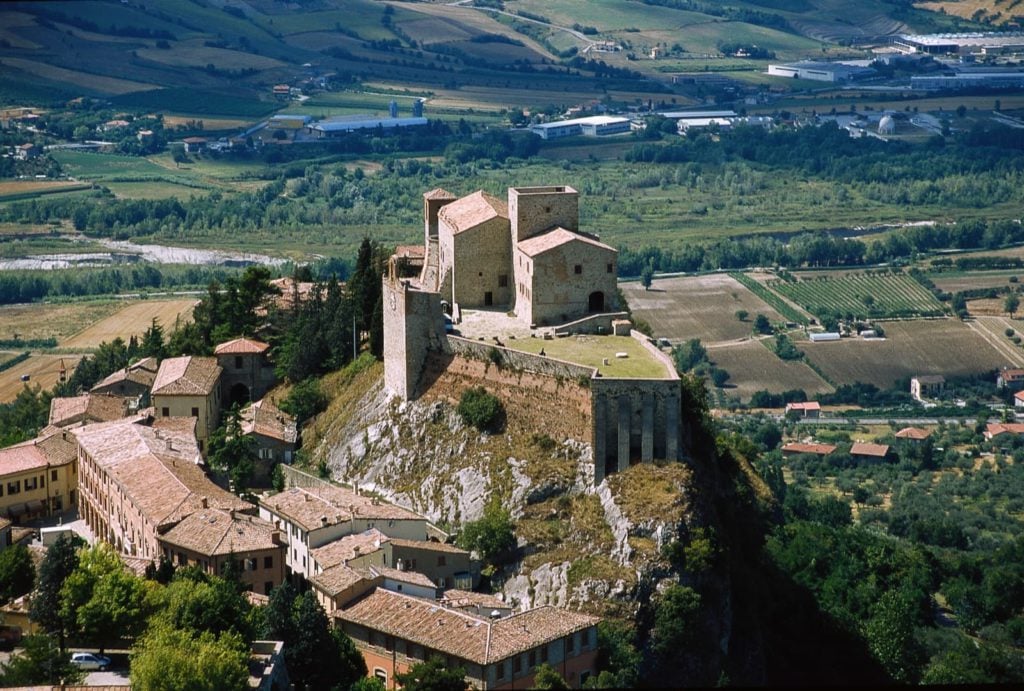
Before or after visiting the castles of Rimini, take some time to relax like the nobles of the 15th century: you can choose between Riminiterme, right on the beach, facing the sea, or Riccione Terme, immersed in the green of the pinewood.
Author
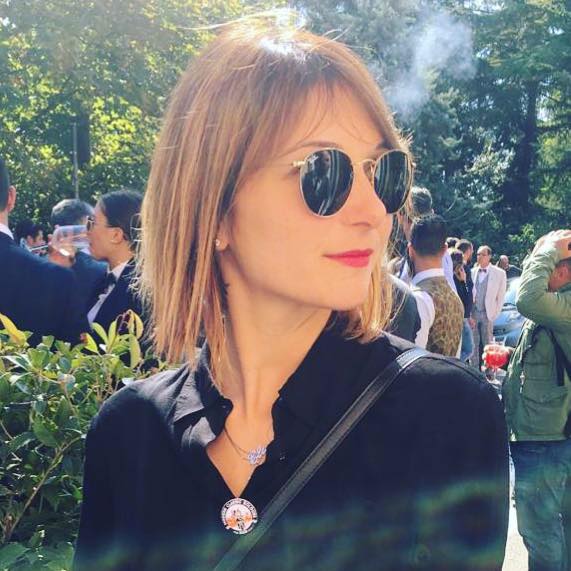
Elisa Mazzini
Social Media Manager for @inEmiliaRomagna and full-time mom.
You may also like
Villages and Spas: a weekend of wellness in Emilia-Romagna
by Celestina Paglia /// November 25, 2024
Historical Spas in Emilia-Romagna
by Elisa Mazzini /// February 17, 2020

Interested in our newsletter?
Every first of the month, an email (in Italian) with selected contents and upcoming events.
10 unmissable Castles of Malatesta lordship
by Walter Manni /// September 5, 2013
Dolce Vita in Valmarecchia: an itinerary among hamlets and hills
by Elisa Mazzini /// June 7, 2016
The most beautiful Italian Villages in Emilia-Romagna
by Elisa Mazzini /// November 26, 2024
